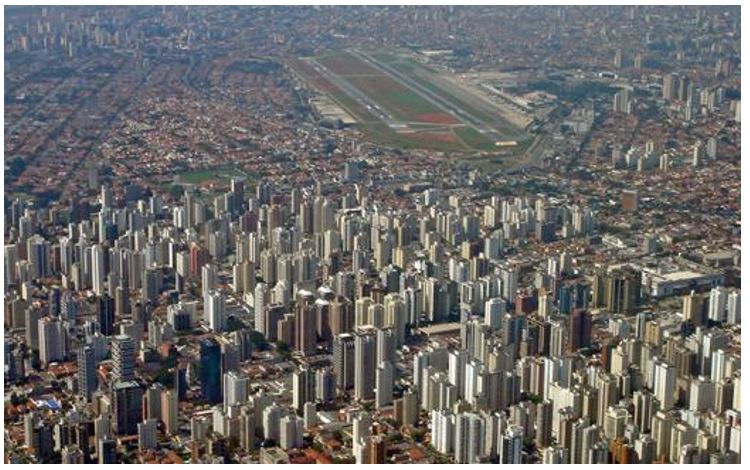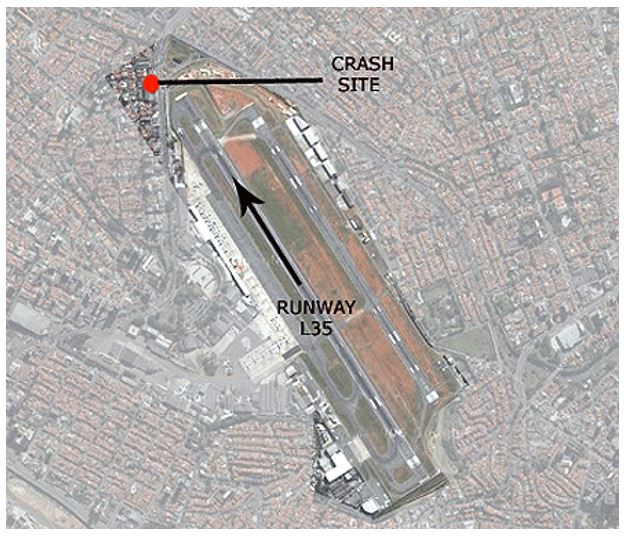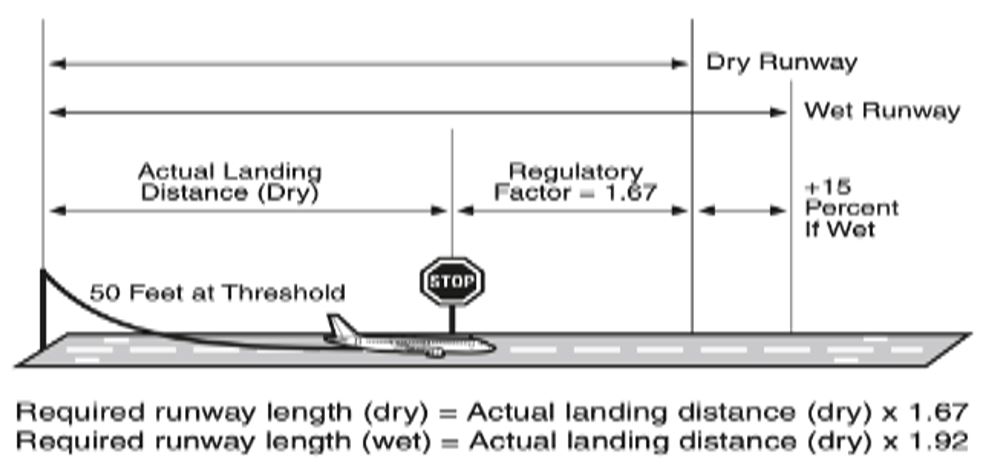Background
Safety is a core value in the aviation industry that involves considerable cost and effort in every operational process. The provision of air transportation services requires the cooperation of numerous stakeholders, such as airlines, airport operators, government authorities, and passengers. Airports and Air Navigation Services (ANS) play a pivotal role in aviation safety, sustainability, and efficiency (Boyd, 2017). In the contemporary world, the air transport industry is essential for every country to meet broader economic, environmental, and social objectives.
International Civil Aviation Organization (ICAO) has always prioritized safety in all aspects and processes involved in the air transportation sector. In particular, ICAO identifies and monitors three categories of its safety oversight index:
- operations;
- air navigation (aerodromes and ground aids (AGA) and ANS);
- support functions (GASP key concepts and metrics, no date, para. 12).
As can be seen, ground handling services, primarily executed on the ramp, and ANS are critical for efficient operations and aerodrome safety.
Purpose
This report explores the TAM Airlines Airbus A320 crash in Sao Paulo, Brazil, in the context of airport safety. It has been determined that airport conditions played a significant role in the accident; however, an overview of various factors contributing to the disaster must be provided first. On July 17, 2007, the regularly-scheduled domestic flight JJ 3054 departed from Salgado Filho International Airport in Porto Alegre, Brazil (ASN aircraft accident Airbus A320-233 PR-MBK, 2007, para. 1). The Airbus A320 registered as PR-MBK was to land on runway 35L, notorious for difficult approach and short length (Sturcke, 2007, para. 1). The adverse weather along the route and in Sao Paulo complicated the situation. As the plane landed at Congonhas Airport, it overran the runway, crashed into a warehouse, and exploded in flames, killing 181 passengers and six crew members on board and 12 people on the ground (ASN aircraft,2007, para. 2). This report aims to analyze the Congonhas Airport safety conditions at the time of the accident and at present, provide a comparative analysis of the situation in 2007 and today, and propose measures for improving airport safety.
Analysis of the Airport Safety Conditions at the Time of the Accident
Sao Paulo Congonhas Airport’s safety conditions were identified as one of the possible operational aspects contributing to the accident. Apart from this factor, the crew’s insufficient training and experience on the A-320 aircraft type, cockpit coordination, management planning, perception error, and loss of situational awareness were determined as main contributors (ASN aircraft, 2007). Furthermore, headache reported by the pilot in command (PIC), crew’s application of the commands, flight indiscipline, environment influence, flight planning, and anxiety and stress in the pilots were reported as undetermined factors (ASN aircraft, 2007). It is evident that the contributing effects are cumulative, and the accident should be studied in a broad context; however, this report focuses primarily on the airport safety impact.
In 2007, Sao Paulo Congonhas Airport was regarded as the busiest airport in Brazil, operating international and domestic flights and providing aviation services. According to CENIPA (2009, p. 16), it had “two asphalt landing-and-takeoff runways: the main runway (17R/35L), measures 1945 x 45 meters; and the auxiliary runway (17L/35R), measures 1435 x 45 meters.” As presented in Figure 1, the airport’s location in a densely populated residential area resulted in high noise levels and exposure to possible accidents for citizens. Consequently, some of the residents demanded the closure of the facility since plane climbs and final approaches carried out over residential buildings implied safety risks. However, the location near business centers of the city was considered a key factor contributing to the high demand for flights.

In 2005, the report on airport inspection by the Civil Aviation Department (DAC) mentioned the non-conformity of conditions. The lack of “Runway End Safety Area (RESA) in each end of the runways 17R/35L and 17L/35R” was determined, and the deadline for corrective action was set to August 30, 2006 (CENIPA, 2009, p. 18). Nevertheless, by the time of the accident, no safety areas crucial to prevent the consequences of runway excursion were ensured. The runway 35L, where an Airbus A-320 operated by TAM Airlines landed, and the crash site are depicted in Figure 2. As per CENIPA (2009), even though the airport operated international flights and utilized aircraft with a capacity of over 60 passenger seats, it did not possess the Operational Certificate prescribed by the Brazilian Aeronautical Certification Regulation. The airport was not certified and lacked an approved Airport Operations Manual.

Another important factor considered in the investigation of the accident was the risk of aquaplaning. It occurs when tires’ grip on the road’s surface is compromised by water buildup resulting from rainfall (Beljatynskij, Prentkovskis and Krivenko, 2010). Under such conditions, the aircraft requires a longer distance to stop, especially when exposed to cross-winds. Paired with a short length of the runway, heavy rains prevailing at the airport area over the previous 24 hours before the TAM Airbus arrival complicated the landing.
In this regard, airdrome safety measures for preventing incidents in different weather conditions should be studied. In 2005, the rugged pavement was placed on the main runway at Congonhas Airport as a result of continuous complaints from pilots in rainy periods (CENTIPA, 2009). Such a replacement aimed to improve the operational safety and ensure the desired levels of friction on critical segments. Even though the measurement of the new pavement’s characteristics showed acceptable values, friction issues began to occur several months after. Furthermore, the efficient water drainage during heavy rains was complicated by declivity problems (CENTIPA, 2009). According to the report by LADB Staff (2007, p. 1), the grooving of the runway was scheduled for after July 28 to ensure the settlement of the concrete. Thus, even though the airstrip had been recently resurfaced, the lack of grooves did not allow it to provide better braking under adverse weather conditions.
It is worth noting that TAM’s PR-MBK aircraft was not the first victim of runway 35L. As stated by Sturcke (2007), two smaller planes skidded off the airstrip the day before the deadly accident. In particular, Pantanal Linhas Aéreas ATR 42-300 slipped off the runway; however, no one was injured (Flores, 2007). These incidents were regarded as critical since the runway’s operating conditions “may have affected the crew’s performance from a psychological perspective, considering the state of anxiety … in the cockpit” (ASN aircraft, 2007, para. 30). This aspect was considered undetermined in the report since the psychological influence was impossible to be confirmed in factual terms (ASN aircraft, 2007, para. 32). At the same time, Sandra Assali, the president of the Brazilian association of friends and relatives of air crash victims, called the TAM’s horrible plane crash “a tragedy foretold, an accident in waiting” (Sturcke, 2007, para. 4). The combination of environmental factors, such as the runway’s short length and operating conditions and the lack of luminosity due to night time, appear to have played a fatal role in the accident.
Assessment of the Current Conditions and a Comparative Analysis
Current Conditions at Congonhas Airport
After the TAM plane crash in 2007, the number of operations at the airport was significantly reduced. In particular, all international flights, including connection, charter, and stopover flights, along with some private jet trips, were temporarily banned. Only direct connections to certain Brazilian cities continued to operate using an alternative runway. The airport reduced the landing slots aiming to increase safety margins (Congonhas Airport, 2010). Furthermore, as shown in Figure 3, the requirements for the actual landing distance differ for wet and dry runways and must be met to ensure airport safety.

Adjustments were made to runway 35L to better comply with safety requirements after the accident. It had been closed for about 45 days and reopened “after undergoing an $8 million resurfacing and runway grooving programme” (Flores, 2007, para.7). The ICAO guidelines emphasize the importance of the RESA; however, the lack of room to extend the runway did not allow such an implementation. As a result, the runway was reduced to accommodate a 230 m long RESA, as depicted in Figure 4 (Pacheco, Camargo, and Halawi, 2020, p. 4). Safety conditions required immediate measures to be taken after the 2007 deadly accident.

A discussion of the expansion of Sao Paulo’s two airports arose, and the possibility to construct a new one was mentioned. However, at the time, the enlargement of the existing Guarulhos Airport seemed to be a more feasible option (Congonhas Airport, 2010). Nowadays, the completion of a new airport “at Caieiras, 40km north of the city” is expected by 2024 with an annual capacity of 48 million passengers (New São Paulo International Airport, no date, para. 1). However, this report focuses on the Congonhas Airport conditions and possibilities for improvement.
Thirteen years after the deadliest accident in Brazil and the whole of South America, Congonhas Airport continues to operate flights. Having lost its passenger traffic primacy to Guarulhos International Airport, it is now regarded as the second busiest and one of the most dangerous airports in the world (McFadden, 2020). According to Visnevskyte (2020), Congonhas Airport transported approximately 21 million passengers in 2019. It lost its international status as a result of restrictions imposed to improve airport safety. At present, “30 operations per hour with narrow-body aircraft” are permitted, with the majority of flights being domestic (Visnevskyte, 2020, para. 27). However, the accident demonstrated the need for RESAs to be established to decrease associated safety hazards.
Comparative Analysis of Safety Conditions
As discussed in the previous section of this report, there are several main issues associated with Congonhas Airport safety:
- no RESAs to prevent the consequences of runway overrun;
- the short length of the main (17R/35L) and auxiliary (17L/35R) runways;
- the airport’s location in a densely populated residential area;
- runway grooving issues.
The comparative analysis of the conditions at the time of the accident in 2007 and at present shows that while some issues were resolved, others remain relevant. Congonhas Airport is surrounded by residential buildings and, as a result, little space is available for extending its runways. RESAs were implicated following ICAO’s safety protocols; however, the runway dimensions of 1940 x 45 meters for the main runway and 1435 x 45 for the auxiliary runway have hardly changed (SBSP Congonhas Airport, 2021). To address the location problem, airport operations were altered, and the number of landing slots, as well as maximum allowable aircraft gross weight, were reduced. Furthermore, operating times were restricted to 6:00 to 22:30 hours (CENIPA, 2009). Finally, aquaplaning risks were addressed by the airport authorities through runway resurfacing and grooving (Flores, 2007). Nevertheless, safety conditions can be improved further to eliminate the risk of accidents.
Proposals for Improvement
Based on the analysis of the current conditions and safety at Congonhas Airport, the following measures are recommended for implementation:
- to begin the certification process of the airport to ensure full compliance with safety requirements;
- to ensure consistent control of the friction measurement tests on the runways (ASN aircraft, 2007);
- to issue an approved Airport Operations Manual with established procedures and parameters for guaranteeing safety in case of adverse weather conditions;
- to inform the airlines operating at Congonhas Airport about risks associated with water buildup during landing and takeoff;
- to restrict the types of aircraft that imply risks and challenges for pilots during landing and takeoff, which can be aggravated by weather conditions;
- to ensure the appropriate illumination of the parking ramp (ASN aircraft, 2007).
The implementation of these measures can deliver improvement to Congonhas Airport safety since it addresses the risks that became fatal to TAM’s Airbus A320 in 2007. Hence, the procedures suggest ensuring appropriate airport conditions and efficient communication between airport authorities and airlines, critical for a safe operational environment.
To summarize, ground handling services and appropriate airport design are critical to aerodrome safety and efficient operations. The environmental factors contributed to the tragic fate of TAM Airlines’ flight JJ 3054 and identified the need to meet the critical requirements and improve the airport’s services. As can be seen from this report, while some of the Congonhas Airport conditions have improved, others still pose challenges for the aircraft utilizing its runways and need to be addressed.
References
A320, São Paulo Congonhas Brazil, 2007 (2007).
ASN aircraft accident Airbus A320-233 PR-MBK (2007).
Beljatynskij, A., Prentkovskis, O. and Krivenko, J. (2010) ‘The experimental study of shallow flows of liquid on the airport runways and automobile roads’, Transport, 25(4), pp.394-402.
Boyd, D.D. (2017) ‘A review of general aviation safety (1984–2017)’, Aerospace medicine and human performance, 88(7), pp.657-664.
CENIPA (2009) Final report A – Nº 67/CENIPA/2009.
Congonhas Airport (2010).
Flores, J., Jr. (2007) TAM A320 crashes in Sao Paulo.
GASP key concepts and metrics (no date). Web.
LADB Staff. (2007) Worst air crash in Brazilian history severely aggravates aviation crisis. Web.
McFadden, C. (2020) Top 10+ scariest airports in the world.
New São Paulo International Airport (no date). Web.
Pacheco, G., Jr., Camargo, M. and Halawi, L. (2020) ‘An evaluation of the operational restrictions imposed to Congonhas Airport by Civil Aviation Instruction 121-1013’, International Journal of Aviation, Aeronautics, and Aerospace, 7(2). Web.
SBSP Congonhas Airport (2021).
Sturcke, J. (2007) ‘Pilots wary of infamous Sao Paulo runway’, The Guardian.
Visnevskyte, E. (2020) Situation in South America’s busiest airports.